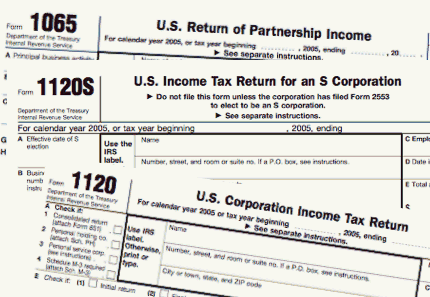Income Tax
50% Bonus Depreciation and $500K Building Deduction Made Permanent
As with many other tax extenders, the faster 15-year cost recovery period was extended by the Tax Increase Prevention Act (TIPA), but only for 2014. The tax break officially expired on January 1, 2015. Now the PATH Act reinstates this provision ...
Feb. 07, 2016

[The new “extenders law” enacted late in 2015 retains several key tax provisions and makes them permanent with certain modifications. This is the 8th part of a series of articles on these tax breaks.]
The highly-publicized Protecting Americans for Tax Hikes (PATH) Act is widely seen as a boon for business growth. Under the new law, a generous maximum Section 179 allowance of $500,000 is extended, retroactive to 2015, and made permanent with future indexing. In addition, the PATH Act retroactively extends 50 percent bonus depreciation deduction through 2017, dropping to 40 percent in 2018 and 30 percent in 2019.
But another key business tax incentive in the new law has gone largely unnoticed. The PATH Act permanently restores faster depreciation deductions for qualified leasehold improvement property, qualified restaurant property and qualified retail improvement property. Now it will take less than half the usual time to write off these expenses.
Normally, it takes 39 years – nearly a half of a century – to completely recover the cost of business building expenses, although deductions may be front-loaded under complex depreciation rules. Many operations will be out of business by then.
However, the tax law previously allowed a much faster writeoff period of only 15 years for certain types of property. These deductions for qualified leasehold improvement property, qualified restaurant property and qualified retail improvement property had to be claimed on a straight-line basis, but were still more favorable to businesses,
As with many other tax extenders, the faster 15-year cost recovery period was extended by the Tax Increase Prevention Act (TIPA), but only for 2014. The tax break officially expired on January 1, 2015. Now the PATH Act reinstates this provision retroactive to that date and makes it a permanent part of the tax code.
The three types of property are generally defined as follows:
- Qualified leasehold improvement property: This includes any improvement to an interior portion of a building that is nonresidential real property and was placed in service more than three years after the building was first placed in service. The landlord and tenant generally can’t be related (e.g., the real estate owner rents the place to a business he or she owns). Improvement may be made either by the landlord or tenant, but must be pursuant to a lease.
- Qualified restaurant property: This is any Section 1250 property that is a building (new or existing ) or an improvement to a building if more than 50 percent of the square footage is a restaurant designed to serve meals to customers.
- Qualified retail improvement property. Finally, this category includes improvements to an interior portion of a building that is nonresidential real property and was placed in service more than three years after the building was first placed in service. It applies to retail establishments primarily involved in sales of goods to the general public such as clothing, grocery and houseware stores and the like.
However, certain expenses — including enlargements, elevators/escalators, common area work and internal structural framework – are excluded from the list of qualified expenses.
This fast cost recovery period may be coordinated with the other tax breaks for businesses. Review the possibilities for your clients affected by the new rules.
